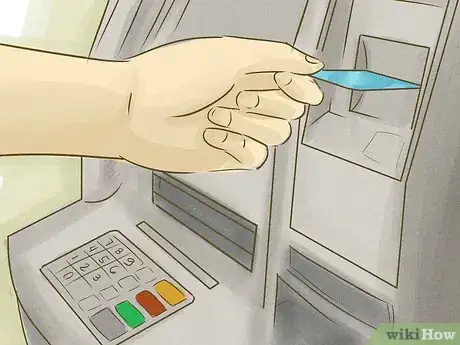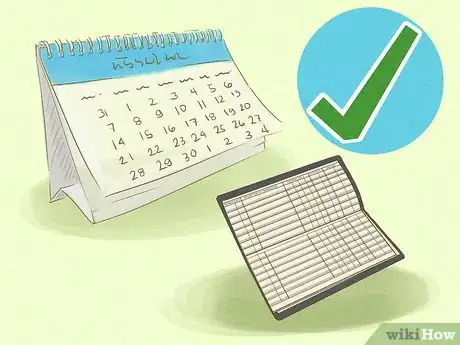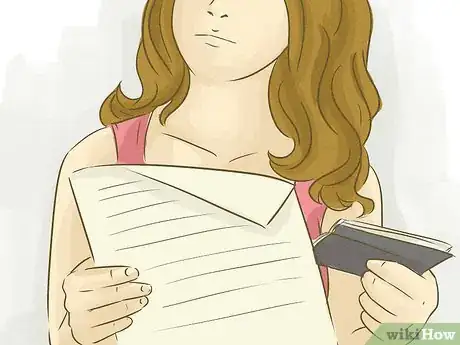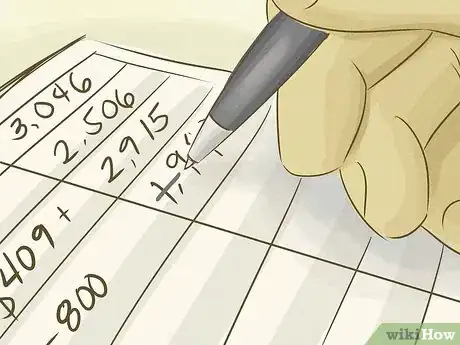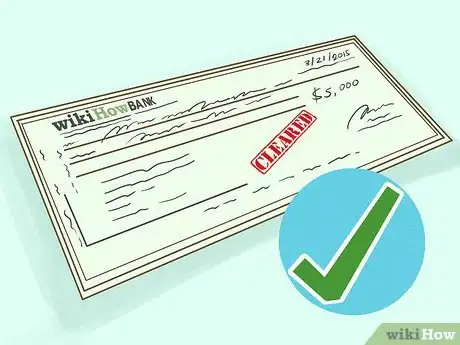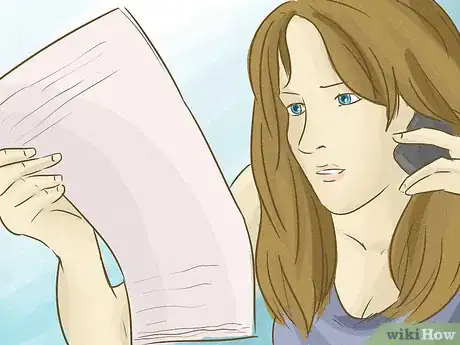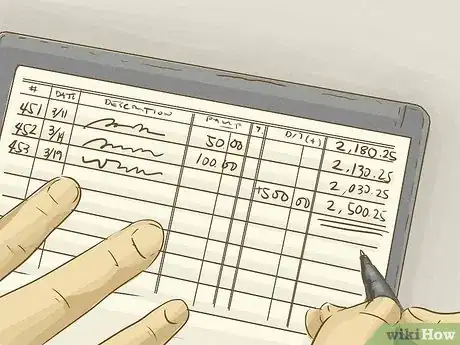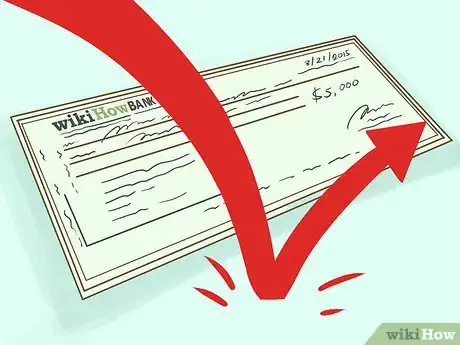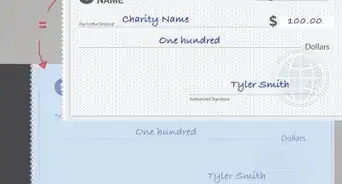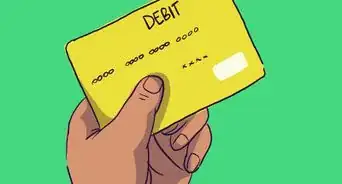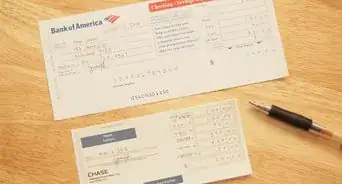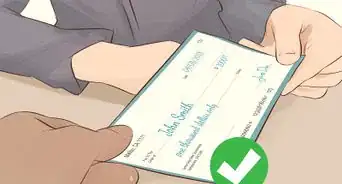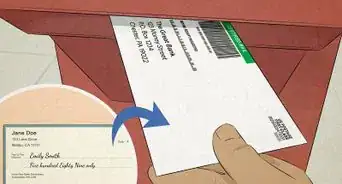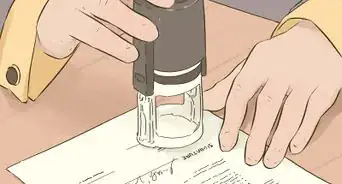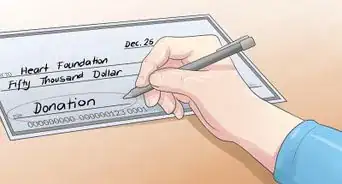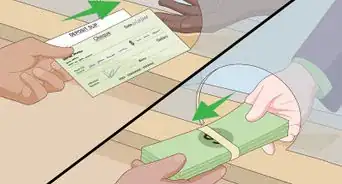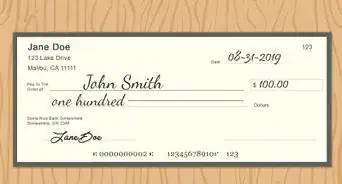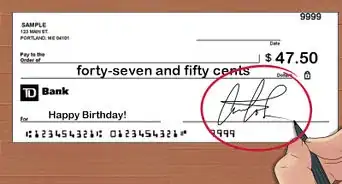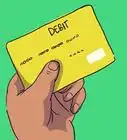This article was co-authored by Michael R. Lewis. Michael R. Lewis is a retired corporate executive, entrepreneur, and investment advisor in Texas. He has over 40 years of experience in business and finance, including as a Vice President for Blue Cross Blue Shield of Texas. He has a BBA in Industrial Management from the University of Texas at Austin.
wikiHow marks an article as reader-approved once it receives enough positive feedback. In this case, 80% of readers who voted found the article helpful, earning it our reader-approved status.
This article has been viewed 650,261 times.
Balancing your checkbook is one of those crucial life skills that you need to know. It will give you a clear sense of not only how much money is in your bank account, but where your money goes. It can also help prevent you from bouncing checks, stick to your budget, help you avoid fees, and detect errors from your bank or even fraudulent billing.
Steps
Checkbook Help
Recording Your Income and Transactions
-
1Use the check register. You know that extra little notebook that comes with your checks, and slips right into your checkbook? It's designed to help you keep track of your all your income and expenditures and all your transactions, from deposits, ATM withdrawals, debit card usage, fees, to any checks you write.[1]
- If you do not have a check register, you can buy or make one. A ledger, graph paper, or even a blank sheet of lined paper will do.
-
2Find out your current balance. Log on to your account online, call or visit your bank, or visit an ATM and get the current balance on the account you wish to track.[2]
- Write this balance in the box at the top of the page or on the empty first line with the note "balance forward".
- There may be checks or electronic debits that haven't cleared yet, so today's figure, while correct, will not account for debits that have not been processed yet. If you're not sure of your exact, current balance, keep an eye on your account and check the balance in the next several days.
Advertisement -
3Record all your transactions. Write down any debit (money being taken out) or credit (money being added) to your account. There should be two columns in your checkbook — one for debits and one for credits. Place the dollar amount being taken away in the debits column and the dollar amount being added in the credit column.[3]
- Record all checks that you write. Write down the check number, the date, the payee (who you write the check to), and the amount of the check.
- Record any withdrawals or payments you make from that account. If you withdraw money from the bank or ATM, or if you purchase something at the store or online using an ATM or debit card, write down the amount of the purchase. If there is a fee for using the ATM, write down that amount also.
- Record any online bill payments. If your online bill payment service gives you a confirmation code, you may wish to jot this code in your check register next to the payee information.
- Record any deposits into your account. If the transaction changes the amount of money in your account, always write it down!
-
4Label your transactions. Doing this will help you can remember what each transaction was for when it is time to balance your checkbook.
- Use specific categories like food, utilities, mortgage, dining out, etc.
-
5Adjust your records daily if you share an account with someone else. Try to touch base with them often about any transactions done using the account so you can each record the payments and the current balance of the account in your individual checkbooks.
- If you are balancing multiple accounts, keep a separate register for each account so they are easy to track.
Balancing Your Checkbook
-
1Recalculate the balance in the account regularly. You can do this after a transaction, or less frequently, such as when you sit down to do your bills.
- If you have a history of bounced checks or an overdrawn account, you should recalculate your balance after every transaction or every other transaction.
- Subtract the amount of any expense, payment, check, or withdrawal from the total. Include transfers out of the account in this subtraction.
- Add the amount of any deposit, credit, or transfer into the account to the total.
- Subtract all your debits from your credits. You should end up with a positive number. Write the new balance after each transaction in the rightmost column.
-
2Reconcile your checkbook. When your bank statement arrives, compare your check register to your statement and check off which transactions have cleared.[4]
- Add any interest that the bank has paid you.
- Subtract any fees that the bank has charged you.
- Check that the transactions in your account register match what is on your statement. Make sure your recorded balance matches what the bank thinks you have, not including any transactions that haven't yet cleared and aren't listed on the statement.
-
3Correct any mistakes in your checkbook. If you find any discrepancies between your numbers and your bank's numbers, figure out where they came from and correct them.
- Double-check your math. Make sure you added and subtracted everything correctly since the checkbook last balanced correctly.
- Look for missing transactions. Did you forget to write something down? Has something not cleared or have you recorded something that happened after the statement date?
- Subtract the balance in your check register from the balance on the statement. Does the amount match the amount of one of the transactions? If so, that transaction has probably not been accounted for correctly yet.
- If the difference between the balance in your checkbook and the balance on your statement has an even number of pennies, divide the difference by 2. Does this new amount match the amount of one of the transactions? If so, that transaction was probably added instead of subtracted or vice versa.
-
4Determine if all your checks have cleared. The money taken out for checks and other payments may not be taken out immediately. If you think a check or other payment has not yet cleared, subtract the amount of that check from the bank's balance and see if it matches yours.
- One way to stay on top of this is to check your account regularly and put check marks next to every check that has already cleared.
-
5Notify your bank if you think there are fraudulent charges on your account. Call or visit your bank to discuss any suspicious charges or charges that are not accounted for in your checkbook and you do not remember making and discuss possible refund options.
- Always make sure you report any suspected fraud on your account, even if it may end up being a charge you simply forgot about or threw away the receipt for.
-
6Finish balancing. Once everything is balanced you may want to draw double lines under the balanced amount in your check register. That way the next time you go to balance you have an idea of the last known correct amount in your register.[5]
- This will also remind you where an error is in the check register for the next time you balance your checkbook.
Understanding the Importance of a Balanced Checkbook
-
1Know that banks can and do make mistakes. Balancing your checkbook probably seems like something only your grandpa does in today's modern age. But many financially responsible people still balance their checkbook so in the rare event the bank commits an error, you can recognize it and get it corrected.[6]
- Think about it: If all you do is look at your bank or credit card statement to make sure your monthly transactions are correct, it will likely be difficult to tell if your bank makes a mistake. And their mistake will then be your loss.
-
2Spend less by keeping track of your spending. Because you know exactly what you have in your bank account based on your balanced checkbook, you will be able to budget your money easily and avoid spending money you don’t have on things you don’t need.[7]
- Keeping your relationship with your money honest will prevent you from overspending or under budgeting and help you save.
-
3Prevent bounced checks and unnecessary bank fees. If you're writing a check, chances are you may not have your current bank statement in front of you, so you may not know how much money you have in your account. Having a balanced check book will help you determine whether you have the necessary funds to write the check and feel assured the check will not bounce.[8]
- Most banks charge a bounced check fee. Some banks waive fees if you have direct deposit set up for your paycheck. Ask your bank if you're not sure about the fees they charge.
- Keep in mind deposited checks, depending on the amount, will take some time to “post”; that is, the money may not appear in your account immediately. Some banks offer provisional credit from the deposit, such as releasing $300 or $1000 of the funds and holding the remaining amount for 2 - 5 business days, and some don't offer any provisional credit.
Expert Q&A
Did you know you can get expert answers for this article?
Unlock expert answers by supporting wikiHow
-
QuestionHow do I do a search for a check?
 Michael R. LewisMichael R. Lewis is a retired corporate executive, entrepreneur, and investment advisor in Texas. He has over 40 years of experience in business and finance, including as a Vice President for Blue Cross Blue Shield of Texas. He has a BBA in Industrial Management from the University of Texas at Austin.
Michael R. LewisMichael R. Lewis is a retired corporate executive, entrepreneur, and investment advisor in Texas. He has over 40 years of experience in business and finance, including as a Vice President for Blue Cross Blue Shield of Texas. He has a BBA in Industrial Management from the University of Texas at Austin.
Business Advisor If doing a physical search for a missing check, keep all of your returned checks in numerical order and quickly scan the checks one by one. Most checking software has a search feature that will allow searches by date, payee, or amounts. Contact your bank for advice on how to perform a search with their software.
If doing a physical search for a missing check, keep all of your returned checks in numerical order and quickly scan the checks one by one. Most checking software has a search feature that will allow searches by date, payee, or amounts. Contact your bank for advice on how to perform a search with their software. -
QuestionWhen using a debit card to purchase something, the company may charge $1 to your account and you have to wait to see the actual debit amount. How long does this take and why do they do this?
 Michael R. LewisMichael R. Lewis is a retired corporate executive, entrepreneur, and investment advisor in Texas. He has over 40 years of experience in business and finance, including as a Vice President for Blue Cross Blue Shield of Texas. He has a BBA in Industrial Management from the University of Texas at Austin.
Michael R. LewisMichael R. Lewis is a retired corporate executive, entrepreneur, and investment advisor in Texas. He has over 40 years of experience in business and finance, including as a Vice President for Blue Cross Blue Shield of Texas. He has a BBA in Industrial Management from the University of Texas at Austin.
Business Advisor
Warnings
- The safest form of transaction for your check register is paper checks. Until banks devise a "Check card register", paper checks are the easiest and safest way to bank.⧼thumbs_response⧽
References
- ↑ https://static1.st8fm.com/en_US/content_pages/1/pdf/us/checkbook-balance-instructions.pdf
- ↑ https://static1.st8fm.com/en_US/content_pages/1/pdf/us/checkbook-balance-instructions.pdf
- ↑ https://static1.st8fm.com/en_US/content_pages/1/pdf/us/checkbook-balance-instructions.pdf
- ↑ http://www.capitalone.com/financial-education/money-basics/balancing-budget/balance-your-checkbook/
- ↑ http://www.capitalone.com/financial-education/money-basics/balancing-budget/balance-your-checkbook/
- ↑ http://thefinancegeek.com/2011/02/how-to-balance-your-checkbook/
- ↑ http://thefinancegeek.com/2011/02/how-to-balance-your-checkbook/
- ↑ http://thefinancegeek.com/2011/02/how-to-balance-your-checkbook/
About This Article
If you need to balance your checkbook, record all of your transactions on the blank, lined paper that comes with your checks, known as the check register. When you’re starting your register, check your current bank balance, then write the balance on the top line. Each time you make a purchase, write the amount in the debit column, and each time you make a deposit into your account, write it in the credits. Compare your register to your bank balance each month to ensure there are no errors. For tips from our financial reviewer on what to do if you suspect fraudulent charges on your account, read on!



